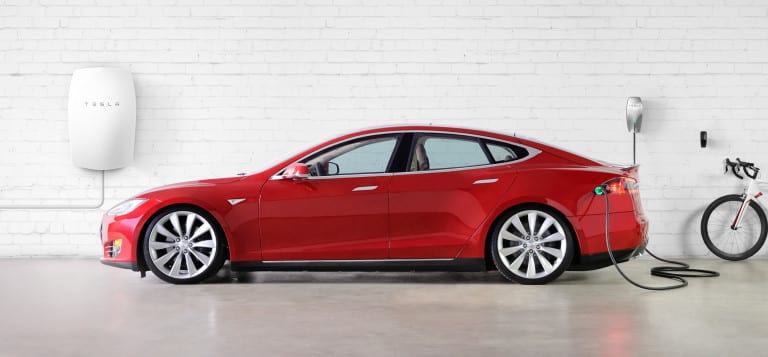
If Tesla does one thing, it is change. It seems that it is ceaseless effort to improve that drives the company. Tesla has stated that it makes around 20 changes to the Model S every week. This means that almost every Model S sold is likely different from those that came before it. Battery sizes are changed regularly, additional motors are added, new sensors are included, and minuscule tweaks are made to things as small as the door handle opening mechanism.
We are seeing that same restless pursuit of the perfect product now with Powerwall, as the 10kWh model — designed for battery backup use during a power outage — has vanished from the product lineup. Given the unpredictable, infrequent nature of power outages, it stands to reason that the realistic use cases and resulting payback for a battery backup Powerwall are not attractive.
A Tesla representative confirmed to GTM that the 10kWh Powerwall has indeed been discontinued, referring to lower-than-forecasted demand from early adopters for the product:
“We have seen enormous interest in the Daily Powerwall worldwide. The Daily Powerwall supports daily use applications like solar self-consumption plus backup power applications, and can offer backup simply by modifying the way it is installed in a home. Due to the interest, we have decided to focus entirely on building and deploying the 7-kilowatt-hour Daily Powerwall at this time.”

The subtext here is that the primary use case for home storage is daily cycling, also known as peak shaving, which can be applied a few different ways. The primary reason for the product existing is to store up solar energy made from customer panels during the day, which can then be used at night. In markets with net metering, there is no financial incentive for doing this. Though, in markets with no net metering regulation, Powerwalls — and residential battery storage in general — could be game changers.
In layman’s terms, net metering says that, if the home produces power and gives the grid, say, 10 kWhs during the day, it can use the same 10 kWhs of power back from the grid with “no penalty.” Some utilities do this by crediting at retail pricing vs by the kWh; others use wholesale. Suffice it to say that it varies as much as car loan options on a used car lot, but that’s the basic concept.
Flipping over to markets without net metering, the options are similarly as varied as those with net metering, but without having to account for the power. Some don’t allow power to be pushed back to the grid. Some allow homes to push power back but don’t credit it. Some sell all power going into the home at retail while crediting all power pushed to the grid at wholesale pricing — or the rate at which the utility buys or produces power for. This last case is how Nevada Energy is now set up after the recent regulation change. Homeowners with solar will get $0.027 per kWh they give to the grid and have to buy it back at $0.095 per kWh.

Enter Powerwall. Drop a few thousand dollars on some residential storage and, boom, all of that power valuable to the customer but “not” to the utility stays in the house, building up during the day, then metering out at night, cutting the (greedy) utility out of the picture. I’m all for the utility getting paid for “grid connectivity fees” or “distribution charges,” but there has to be a balance. Thankfully, in a free market, that balance comes to residential solar owners in the form of lithium-ion batteries.
If you were looking for a residential storage system specifically for battery backup, don’t fret, as the smaller 7 kWh Powerwalls can still support this, per the official details in the Tesla Energy Press Kit:
Tesla Powerwall is a rechargeable lithium-ion battery designed to store energy at a residential level for self-consumption of solar power generation, load shifting, and backup power. Powerwall consists of Tesla’s lithium-ion battery pack, liquid thermal control system and software that receives dispatch commands from a solar inverter. The unit mounts seamlessly on a wall and is integrated with the local grid to harness excess power and give customers the flexibility to draw energy from their own reserve.
The Powerwall can provide a number of different benefits to the customer including:
- Increasing self-consumption of solar power generation – The battery can store surplus solar energy not used at the time it is generated and use that energy later when the sun is not shining
- Load shifting – The battery can provide financial savings to its owner by charging during low rate periods when demand for electricity is lower and discharging during more expensive rate periods when electricity demand is higher
- Back-up power – Assures power in the event of an outage
Powerwall increases the capacity for a household’s solar consumption, while also offering backup functionality during grid outages.
Elon Musk shared that version #2 of Powerwall is coming down the pipes sometime this summer. They just can’t sit still, can they? Looking back at one of my favorite pieces of inspiration that Tesla shared when kicking off Tesla Energy in April of 2015, it makes sense:
Tesla is not just an automotive company, it’s an energy innovation company. Tesla Energy is a critical step in this mission to enable zero emission power generation.
Source: CleanTechnica. Reproduced with permission.










